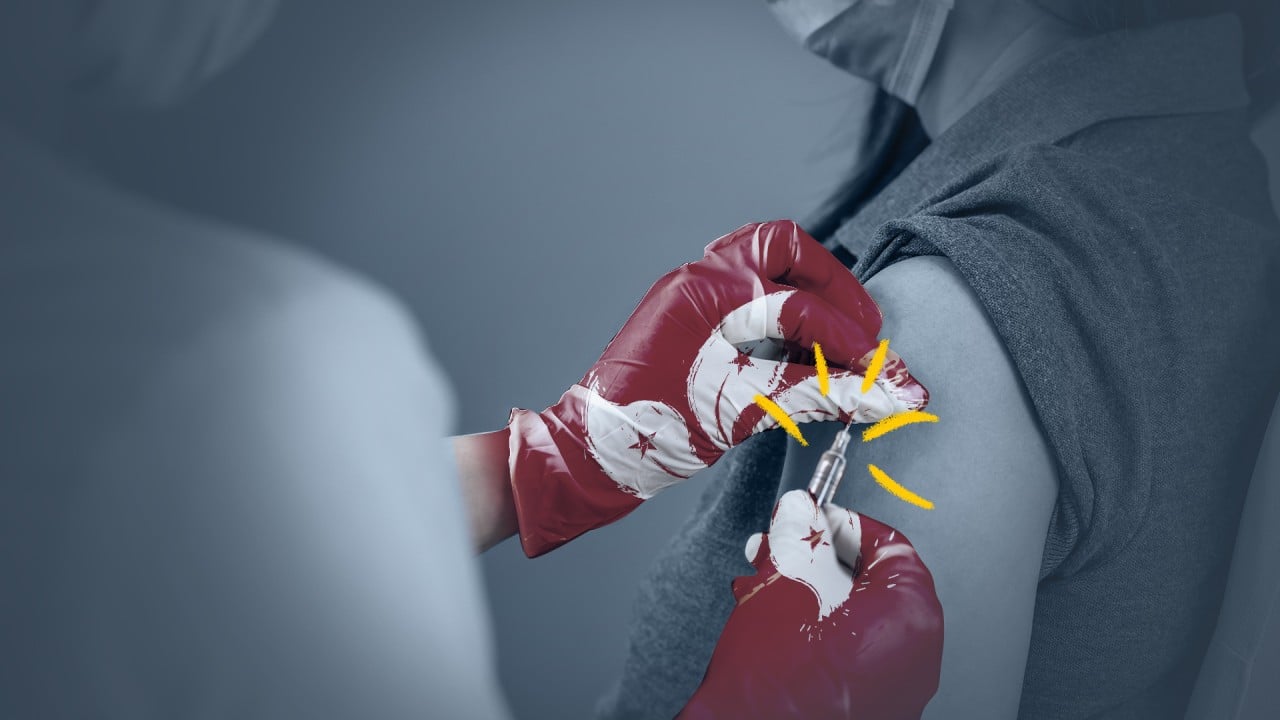
Coronavirus: Hong Kong contact-tracing command centre to open within days; city logs 33 new Covid-19 cases
- Hong Kong reports 29 local Covid-19 cases, including five from untraceable sources, as well as four imported infections
- Officers will be seconded from police, Immigration Department and customs for new command centre, which will be located at Kai Tak Community Hall
Dr Chuang Shuk-kwan, head of the communicable disease branch of the Centre for Health Protection, said officers would be seconded from the police force, Immigration Department and customs for the new centre, which would be located at Kai Tak Community Hall in Kowloon East.

05:09
What there is to know about the Covid-19 vaccines roll out in Hong Kong
“Starting next Monday, around 100 disciplined services officers will be seconded and help trace close contacts of Covid-19 cases,” Chuang said at a regular Covid-19 briefing on Thursday. “If there is an increase or decrease in cases, the number of officers will also be adjusted.”
Relevant training would be provided to the officers beforehand, Chuang said, adding that she hoped a senior member of the disciplined services staff would be the centre’s commander.
Of the newly logged cases, four were imported. Five of the 29 local cases were from unknown sources.
More than 30 people tested preliminary-positive for the virus.
Hong Kong beauticians protest against Covid-19 social-distancing rules
A cluster at the Tseung Kwan O-Lam Tin tunnel continued to expand, with another 11 cases, including two workers and nine close contacts, bringing the number of infected people in the group to 27.
A patient care assistant at the occupational therapy unit of Princess Margaret Hospital, where an outbreak was recorded earlier at a medical day ward, tested preliminary-positive. Three of the worker’s colleagues were considered close contacts and would be quarantined.

The city has so far recorded 9,107 confirmed infections, with 154 related deaths.
The government said a ban on arrivals from Britain and South Africa would be maintained, as well as the 21-day mandatory quarantine for all people arriving from overseas. Such measures would be reviewed every two weeks, a government spokesman added.
Undersecretary for Food and Health Dr Chui Tak-yi urged the public to stay vigilant despite a downward trend in cases.
Explainer: how soon will vaccine shots be available in Hong Kong, and what are the possible side effects?
“The government urges the public not to join or arrange any unnecessary gatherings … and avoid staying in places that are crowded or poorly ventilated,” Chui said. “If the public is not vigilant enough, it could increase the risk of an epidemic rebound.”
The government had previously said Hong Kong’s vaccination programme would commence next month, beginning with 1 million jabs developed on the mainland by Sinovac.
Another 1 million from overseas – co-developed by Germany’s BioNTech and US-based Pfizer – were to arrive in February at the earliest.
But while the Pfizer-BioNTech vaccine has been proven to have an efficacy rate of about 95 per cent, Thursday was expected to mark the first time Sinovac has published its third-phase clinical data.
On December 23, Sinovac had asked for a delay of up to 15 days in releasing its precise efficacy data as the company was still consolidating information from global trials, though it said no one who had taken the vaccine had developed a severe case of Covid-19.

Dr Thomas Tsang Ho-fai, a member of the government’s vaccination programme advisory panel and a former health official, said the panel would closely monitor the Sinovac data when released.
“When the clinical data is out, the government expert advisers will make further suggestions to the administration,” he told a radio programme.
Tsang also said the advisory panel hoped to finalise preparations for the vaccination programme by the end of this month, including liaising with clinics, care homes for the elderly and designated facilities such as community halls.
Hong Kong’s school year will not be extended, government says
Meanwhile, residents of Fung Chak House at Choi Wan (II) Estate, where a mandatory testing order was issued for the first time on December 28 after sewage samples there tested positive to the coronavirus before a confirmed case was identified, will need to be tested for a second time.
“As the sewage samples in Fung Chak House are still constantly testing positive, the relevant persons have to undergo a second test,” the government said on Wednesday night.
At least five residents there were found to be infected with Covid-19 during the first round of testing.
The government added that people who had been to the residential block from December 15 to 28 would need to receive a virus test between January 6 and 9.
Chui said the compliance rate of the first round of mandatory testing was more than 95 per cent. Citing experts’ analysis, he said it was possible infections in some residents were not detected in the initial testing due to low viral load.
“Perhaps some of the individuals who have been tested [were] in a very initial stage of illness, so they were shedding a very little amount of virus that was not detectable. Perhaps with time, the viral load increased and that’s why the sewage surveillance showed a positive result,” he said.
Separately, with the Covid-19 situation recently worsening in Hebei, Hong Kong on Wednesday started asking all those arriving from the province through the land border to submit deep-throat saliva samples for virus testing. Similar arrangements were already in place for arrivals from two cities and four other provinces.
Additional reporting by Victor Ting


